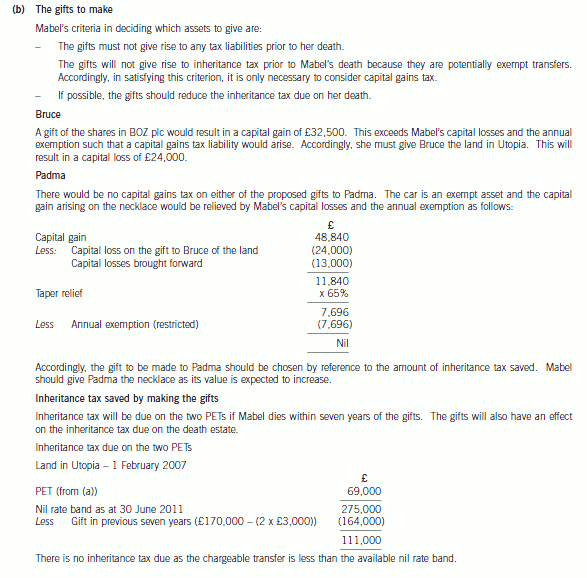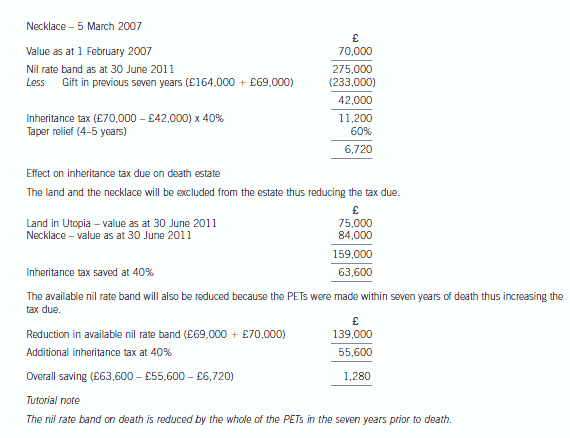注意查看:ACCA考试的报名规则,你知道有哪些吗?
发布时间:2020-09-03
各位小伙伴大家好!大家知道ACCA考试吗?大家知道ACCA考试的报名规则吗?51题库考试学习网为大家带来了关于这门考试的相关信息,让我们一起来看看吧!
报名规则:
1.申请参加ACCA考试者,必须先注册成为ACCA学员。
2.学员必须按考试大纲设置的先后次序报考,即应用知识模块,应用技能模块,战略专业模块。同一个模块里的课程可以选择任意顺序报考,但建议在同一个模块中也按照课程顺序报考。
3.基础阶段的应用知识模块考试时间为两小时,基础阶段的应用技能模块和战略专业阶段的所有课程考试时间为三小时,及格成绩为50分(百分制)。从2016年起,ACCA实行4个考季,即学员可选择在3、6、9、12月考季在当地考点进行考试。学员每年最多可报考8门不相同的科目。
请注意:中国大陆地区自2018年3月考季开始将取消PM-FM的笔试。
4.基础阶段9门考试不设时限;专业阶段考试年限为7年,从通过第一门战略专业阶段考试之日算起。
5.考试的报名时间不同,考试资费标准就不同(该优惠政策仅限网上报名)。较早报名考试,费用会相对较少。报考时间分为提前报名时段,常规报名时段和后期报名时段。
ACCA每科考试时间不是全科都一样,根据考试科目不同时间也可能不一样。
1、ACCA F1-F4随时机考,当场知成绩,随报随考,费用固定。考试时间:2小时。及格成绩为50分(百分制)。
2、F5-F9科目只有分季机考,每年3、6、9、12月4个考季,机考时间:3小时,另有10分钟时间阅读考前须知,及格成绩为50分(百分制)。
3、ACCA专业P阶段所有课程考试时间为3小时,及格成绩为50分(百分制),每科成绩合格后予以保留。
一旦全科通过并领取了ACCA证书后,ACCA证书是不会过期的,即官方不设时限,只要成为ACCA会员以后每年维持ACCA年费的正常支付,就可以保持ACCA资格。
ACCA的有效期:
ACCA学员有七年的时间通过专业阶段的考试。如果学员不能在七年内通过所有专业阶段考试,那么超过七年的已通过专业阶段科目的成绩将作废,须重新考试。七年时限从学员通过第一门专业阶段考试之日算起。
以上就是今天分享的全部内容了,各位小伙伴根据自己的情况进行查阅,希望本文对各位有所帮助,预祝各位取得满意的成绩,如需了解更多相关内容,请关注51题库考试学习网!
下面小编为大家准备了 ACCA考试 的相关考题,供大家学习参考。
19 Which of the following statements about intangible assets in company financial statements are correct according
to international accounting standards?
1 Internally generated goodwill should not be capitalised.
2 Purchased goodwill should normally be amortised through the income statement.
3 Development expenditure must be capitalised if certain conditions are met.
A 1 and 3 only
B 1 and 2 only
C 2 and 3 only
D All three statements are correct
(b) Mabel has two objectives when making the gifts to Bruce and Padma:
(1) To pay no tax on any gift in her lifetime; and
(2) To reduce the eventual liability to inheritance tax on her death.
Advise Mabel which item to gift to Bruce and to Padma in order to satisfy her objectives. Give reasons for
your advice.
Your advice should include a computation of the inheritance tax saved as a result of the two gifts, on the
assumption that Mabel dies on 30 June 2011. (10 marks)


(b) Seymour offers health-related information services through a wholly-owned subsidiary, Aragon Co. Goodwill of
$1·8 million recognised on the purchase of Aragon in October 2004 is not amortised but included at cost in the
consolidated balance sheet. At 30 September 2006 Seymour’s investment in Aragon is shown at cost,
$4·5 million, in its separate financial statements.
Aragon’s draft financial statements for the year ended 30 September 2006 show a loss before taxation of
$0·6 million (2005 – $0·5 million loss) and total assets of $4·9 million (2005 – $5·7 million). The notes to
Aragon’s financial statements disclose that they have been prepared on a going concern basis that assumes that
Seymour will continue to provide financial support. (7 marks)
Required:
For each of the above issues:
(i) comment on the matters that you should consider; and
(ii) state the audit evidence that you should expect to find,
in undertaking your review of the audit working papers and financial statements of Seymour Co for the year ended
30 September 2006.
NOTE: The mark allocation is shown against each of the three issues.
(b) Goodwill
(i) Matters
■ Cost of goodwill, $1·8 million, represents 3·4% consolidated total assets and is therefore material.
Tutorial note: Any assessments of materiality of goodwill against amounts in Aragon’s financial statements are
meaningless since goodwill only exists in the consolidated financial statements of Seymour.
■ It is correct that the goodwill is not being amortised (IFRS 3 Business Combinations). However, it should be tested
at least annually for impairment, by management.
■ Aragon has incurred losses amounting to $1·1 million since it was acquired (two years ago). The write-off of this
amount against goodwill in the consolidated financial statements would be material (being 61% cost of goodwill,
8·3% PBT and 2·1% total assets).
■ The cost of the investment ($4·5 million) in Seymour’s separate financial statements will also be material and
should be tested for impairment.
■ The fair value of net assets acquired was only $2·7 million ($4·5 million less $1·8 million). Therefore the fair
value less costs to sell of Aragon on other than a going concern basis will be less than the carrying amount of the
investment (i.e. the investment is impaired by at least the amount of goodwill recognised on acquisition).
■ In assessing recoverable amount, value in use (rather than fair value less costs to sell) is only relevant if the going
concern assumption is appropriate for Aragon.
■ Supporting Aragon financially may result in Seymour being exposed to actual and/or contingent liabilities that
should be provided for/disclosed in Seymour’s financial statements in accordance with IAS 37 Provisions,
Contingent Liabilities and Contingent Assets.
(ii) Audit evidence
■ Carrying values of cost of investment and goodwill arising on acquisition to prior year audit working papers and
financial statements.
■ A copy of Aragon’s draft financial statements for the year ended 30 September 2006 showing loss for year.
■ Management’s impairment test of Seymour’s investment in Aragon and of the goodwill arising on consolidation at
30 September 2006. That is a comparison of the present value of the future cash flows expected to be generated
by Aragon (a cash-generating unit) compared with the cost of the investment (in Seymour’s separate financial
statements).
■ Results of any impairment tests on Aragon’s assets extracted from Aragon’s working paper files.
■ Analytical procedures on future cash flows to confirm their reasonableness (e.g. by comparison with cash flows for
the last two years).
■ Bank report for audit purposes for any guarantees supporting Aragon’s loan facilities.
■ A copy of Seymour’s ‘comfort letter’ confirming continuing financial support of Aragon for the foreseeable future.
C Co uses material B, which has a current market price of $0·80 per kg. In a linear program, where the objective is to maximise profit, the shadow price of material B is $2 per kg. The following statements have been made:
(i) Contribution will be increased by $2 for each additional kg of material B purchased at the current market price
(ii) The maximum price which should be paid for an additional kg of material B is $2
(iii) Contribution will be increased by $1·20 for each additional kg of material B purchased at the current market price
(iv) The maximum price which should be paid for an additional kg of material B is $2·80
Which of the above statements is/are correct?
A.(ii) only
B.(ii) and (iii)
C.(i) only
D.(i) and (iv)
Statement (ii) is wrong as it reflects the common misconception that the shadow price is the maximum price which should be paid, rather than the maximum extra over the current purchase price.
Statement (iii) is wrong but could be thought to be correct if (ii) was wrongly assumed to be correct.
声明:本文内容由互联网用户自发贡献自行上传,本网站不拥有所有权,未作人工编辑处理,也不承担相关法律责任。如果您发现有涉嫌版权的内容,欢迎发送邮件至:contact@51tk.com 进行举报,并提供相关证据,工作人员会在5个工作日内联系你,一经查实,本站将立刻删除涉嫌侵权内容。
- 2021-02-03
- 2020-09-03
- 2021-05-27
- 2020-09-04
- 2020-09-03
- 2020-02-27
- 2020-03-01
- 2020-01-08
- 2020-01-08
- 2020-09-03
- 2020-01-10
- 2021-01-21
- 2020-02-22
- 2020-08-12
- 2020-01-10
- 2020-02-14
- 2019-03-08
- 2020-01-10
- 2020-08-13
- 2020-08-13
- 2020-01-10
- 2020-01-09
- 2021-01-13
- 2020-01-31
- 2020-01-10
- 2021-01-13
- 2020-01-10
- 2020-01-09
- 2021-06-27
- 2020-01-09